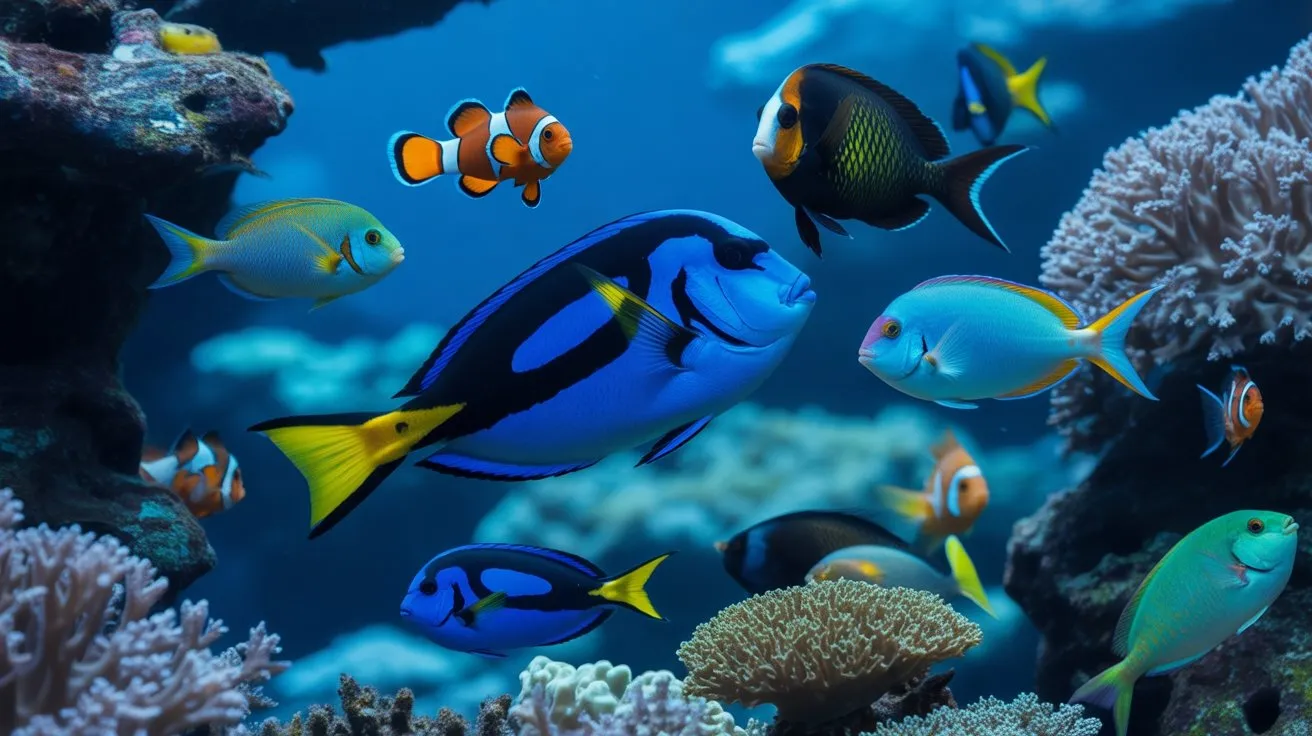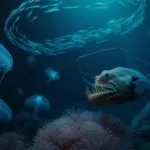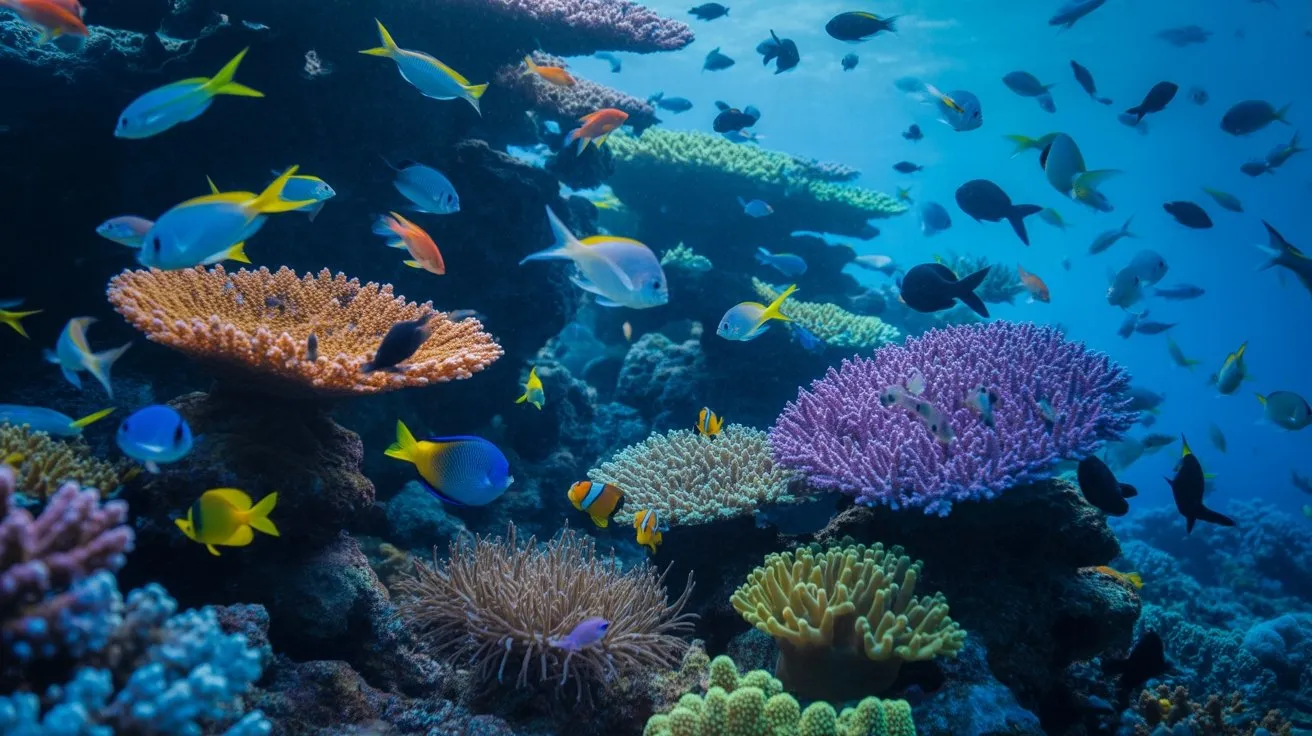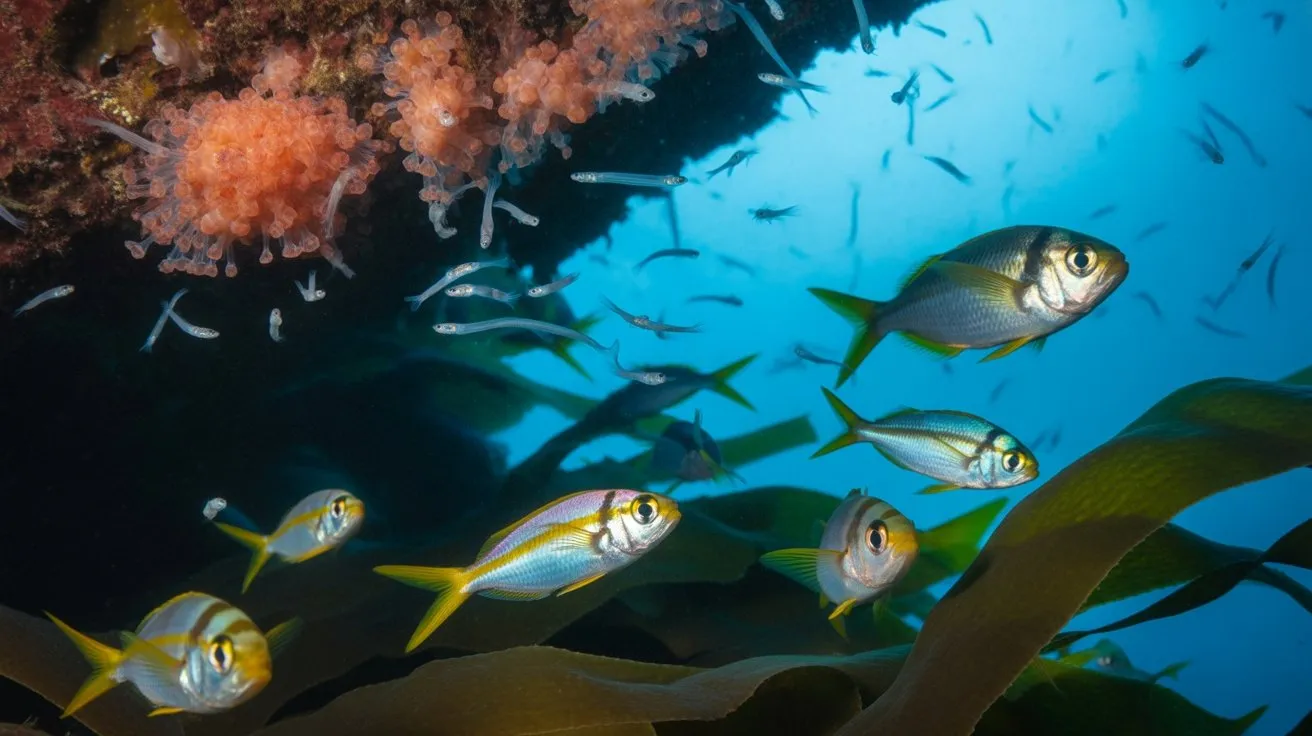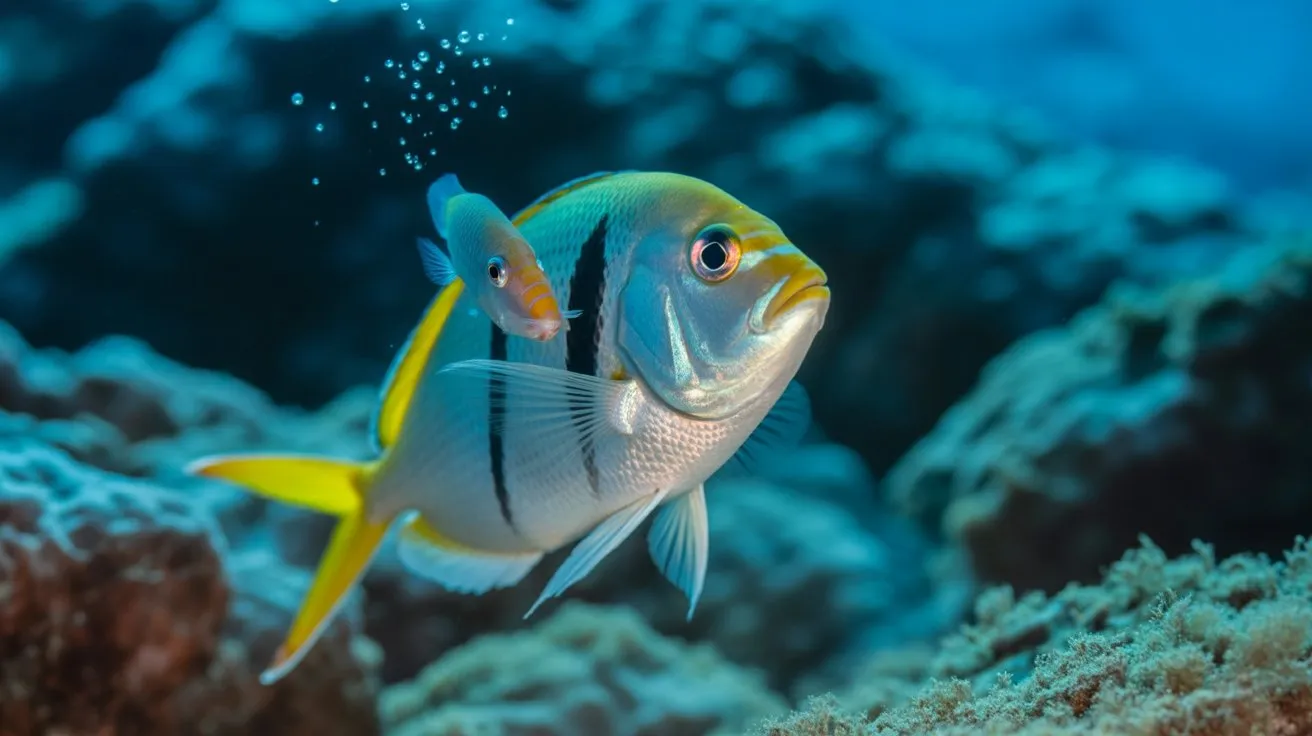You’re swimming through a coral reef when a flash of electric blue and neon yellow streaks past your mask—a demonstration of the complex evolutionary forces shaping marine coloration. You’ll find that ocean fish have developed their vibrant pigmentation through millions of years of selective pressures, including predator-prey dynamics, reproductive signaling, and territorial communication. However, the underwater light spectrum creates unique challenges that freshwater species don’t face, fundamentally altering how these chromatic adaptations function.
The Science of Underwater Light and Color Perception
As sunlight penetrates the ocean’s surface, water molecules selectively absorb different wavelengths, creating a dynamic underwater light environment that fundamentally shapes how marine organisms perceive and display color.
You’ll find that red wavelengths disappear within the first 5-10 meters, orange fades by 25 meters, and yellow diminishes around 50 meters. Blue light penetrates deepest, reaching 200 meters in clear water.
Your fish’s visual system has adapted accordingly. Many species possess tetrachromatic vision, detecting ultraviolet wavelengths you can’t see. Their photoreceptors are optimized for available blue-green spectra.
Iridophores and chromatophores contain crystalline platelets that reflect specific wavelengths through structural coloration. This creates brilliant blues and silvers through thin-film interference rather than pigmentation.
Deep-water species often develop bioluminescent photophores, replacing solar-dependent coloration with biochemically-generated light frequencies.
Camouflage Strategies in Marine Environments
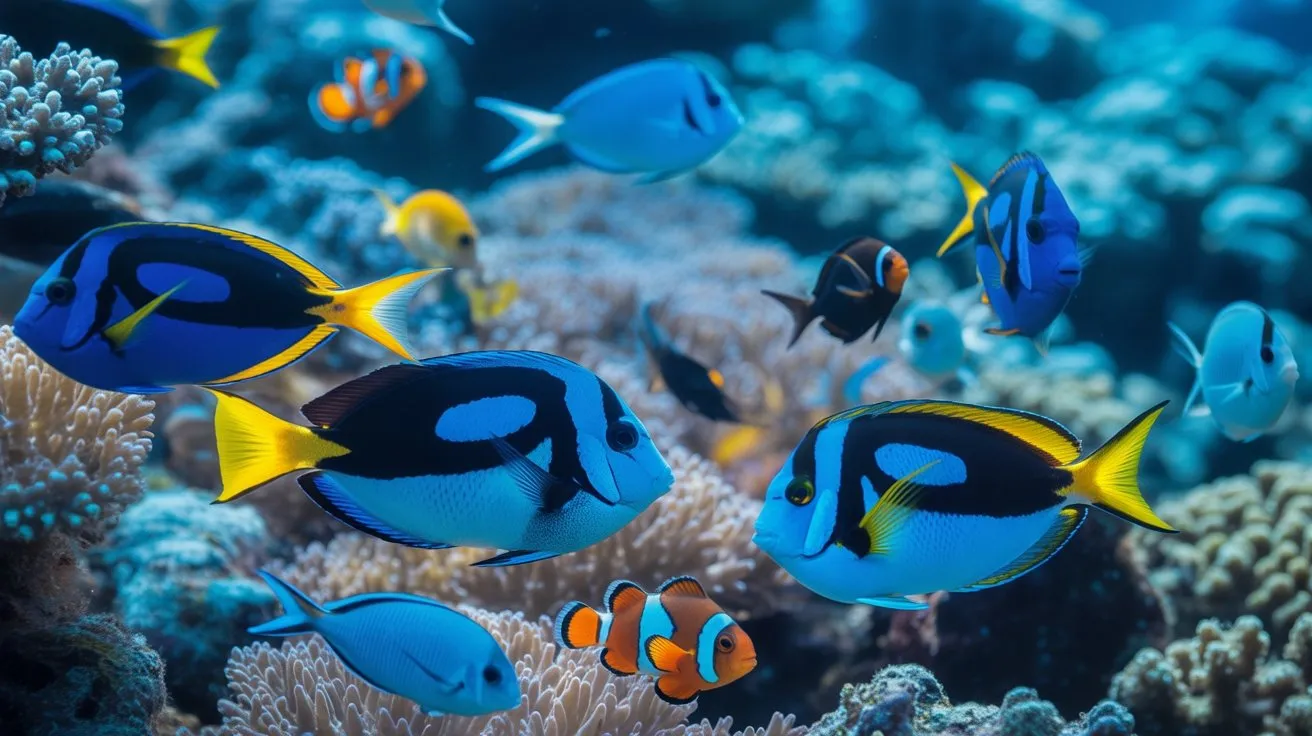
While ocean depths create challenging visual environments, marine fish have evolved sophisticated camouflage mechanisms that exploit these same light-filtering properties for survival advantage.
You’ll observe three primary camouflage adaptations that demonstrate remarkable evolutionary precision:
- Counter-illumination: Fish like lanternfish produce bioluminescent ventral emissions that match downwelling light intensity, effectively erasing their silhouettes when viewed from below.
- Disruptive coloration: Species such as angelfish display high-contrast patterns that fragment their body outline, confusing predators’ visual processing systems.
- Background matching: Flatfish dynamically adjust chromatophore distribution to mirror substrate coloration and texture with extraordinary fidelity.
These strategies aren’t merely aesthetic—they’re precisely calibrated survival mechanisms that leverage ocean optics for predator evasion and hunting efficiency. Additionally, the presence of healthy predator populations in reef ecosystems can influence the effectiveness of these camouflage strategies by altering the dynamics of predator-prey interactions.
Communication Through Color Patterns and Displays
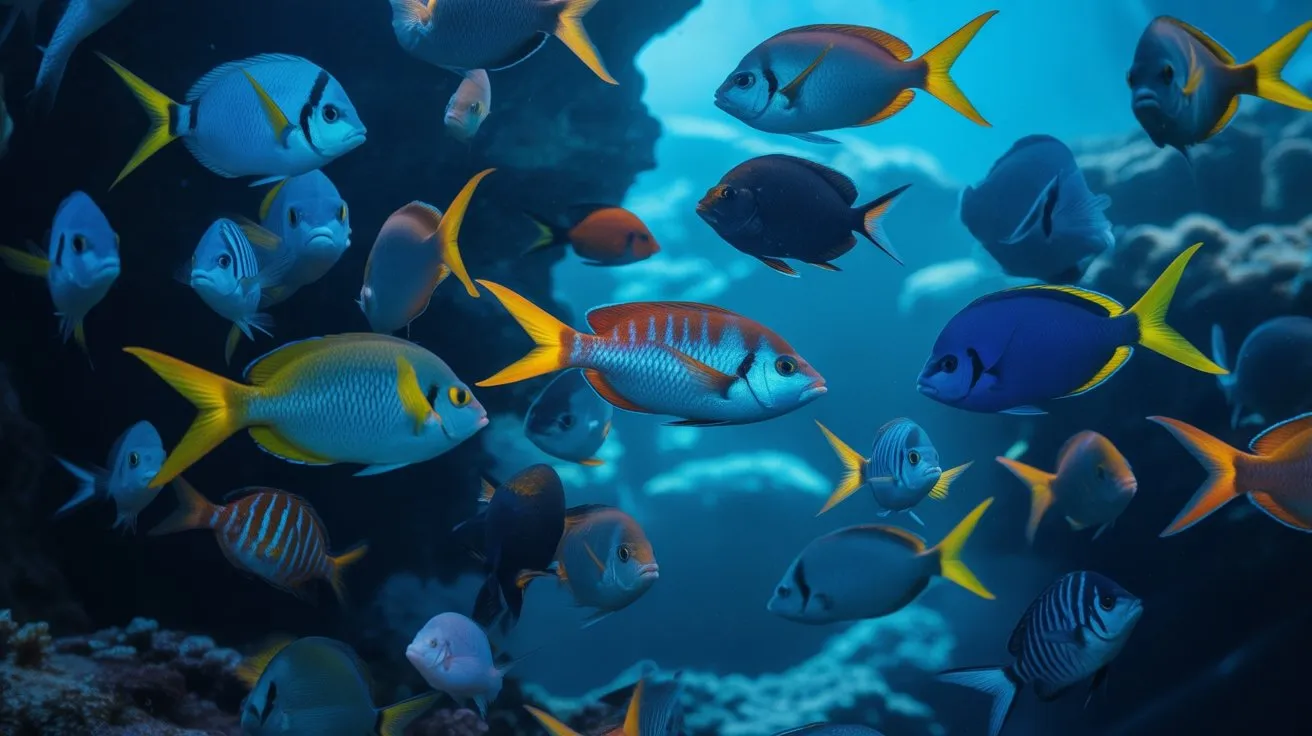
Beyond their role in concealment, color patterns serve as sophisticated communication networks that enable complex social interactions among marine fish species. You’ll observe dynamic chromatic displays facilitating mate selection, territorial defense, and hierarchical establishment. Chromatophores containing specialized pigments enable rapid color modulation, while iridophores produce structural coloration through light interference. Notably, the vibrant displays of these fish play crucial roles in maintaining coral reef health by indicating species presence and fostering ecosystem balance.
| Communication Type | Color Pattern | Species Example | Function |
|---|---|---|---|
| Mating Display | Bright nuptial colors | Mandarin fish | Reproductive signaling |
| Territorial Warning | Aggressive striping | Damselfish | Boundary enforcement |
| Social Hierarchy | Dominant coloration | Wrasses | Status indication |
| Spawning Readiness | Breeding bars | Angelfish | Reproductive state |
These visual signals operate across species-specific wavelengths, ensuring precise intraspecific recognition while minimizing interspecific interference in densely populated reef ecosystems.
Mate Selection and Breeding Coloration

Reproductive success drives the evolution of spectacular breeding coloration in marine fish species, where you’ll witness some of nature’s most dramatic chromatic transformations.
Sexual selection pressures create intense coloration patterns that enhance reproductive fitness through mate attraction and competitor deterrence.
You’ll observe three primary breeding coloration strategies:
- Nuptial plumage displays – Males develop brilliant temporary colorations during spawning seasons, like triggerfish exhibiting electric blue patterns.
- Sexual dimorphism enhancement – Breeding males intensify existing color differences, such as parrotfish developing vivid head markings.
- Territorial advertisement – Dominant males display saturated colors to establish breeding territories and attract gravid females.
These chromatic displays function as honest signals of genetic quality, nutritional status, and reproductive readiness.
Females utilize these visual cues for mate assessment, selecting partners with ideal coloration intensity and pattern symmetry.
Warning Colors and Chemical Defense Mechanisms

When predators encounter brightly colored marine fish displaying vivid reds, oranges, and yellows, they’re observing aposematic coloration that signals potent chemical defenses.
You’ll find this warning system effectively deters attacks through learned avoidance behaviors. Toxic compounds like tetrodotoxin in pufferfish, ciguatoxin in certain reef species, and palytoxin concentrations create formidable deterrents. These neurotoxins cause paralysis, respiratory failure, or severe gastrointestinal distress in predators.
Lionfish exemplify this strategy perfectly—their striking red and white stripes advertise venomous dorsal spines containing acetylcholine and norepinephrine.
Similarly, boxfish display bright yellows while secreting ostracitoxin through their skin when threatened.
You’ll observe that predators quickly learn to associate these conspicuous color patterns with negative experiences, creating evolutionary pressure that maintains both toxicity and visual warning signals. Additionally, the health of coral reefs directly influences the abundance of these colorful fish, as healthy reefs provide vital habitats and resources for diverse marine species.
Territorial Marking and Social Hierarchies

Numerous coral reef fish species employ distinct color patterns as visual markers to establish and defend territories, with dominant individuals displaying more intense pigmentation than subordinates.
You’ll observe that chromatic displays function as efficient communication systems, reducing energetically costly physical confrontations while maintaining social order.
Territorial color signaling operates through three primary mechanisms:
- Chromatic intensity gradients – Alpha males exhibit saturated hues (deep blues, vibrant yellows) while subordinates display muted coloration.
- Pattern complexity variations – Dominant fish develop intricate stripe configurations and spot arrangements that subordinates lack.
- Rapid color switching – Territorial holders can instantly shift between aggressive warning displays and neutral patterns.
You’ll find that damselfish, wrasses, and parrotfish demonstrate these hierarchical color systems most prominently, with territorial boundaries clearly delineated through visual cues rather than physical markers.
Depth-Related Color Adaptations

As ocean depths increase from surface waters to abyssal zones, fish species exhibit systematic color adaptations that correspond directly to available light wavelengths and photonic penetration limits.
You’ll observe red pigmentation primarily dominates shallow reef species because red wavelengths penetrate only 10-15 meters, creating effective camouflage against filtered backgrounds.
At mesopelagic depths (200-1000m), you’ll find mainly silver and blue colorations that exploit remaining shorter wavelengths.
Bathypelagic species demonstrate black or transparent phenotypes since photons can’t penetrate beyond 1000 meters.
Counter-illumination strategies emerge through ventral bioluminescence, where you’ll see species like lanternfish producing blue-green light matching downwelling radiation.
Deep-sea anglerfish exhibit entirely black integuments while developing photophore-based luring mechanisms, demonstrating how hydrostatic pressure and absolute darkness drive convergent evolution toward non-reflective pigmentation patterns.
Evolutionary Pressures in Saltwater Vs Freshwater Habitats
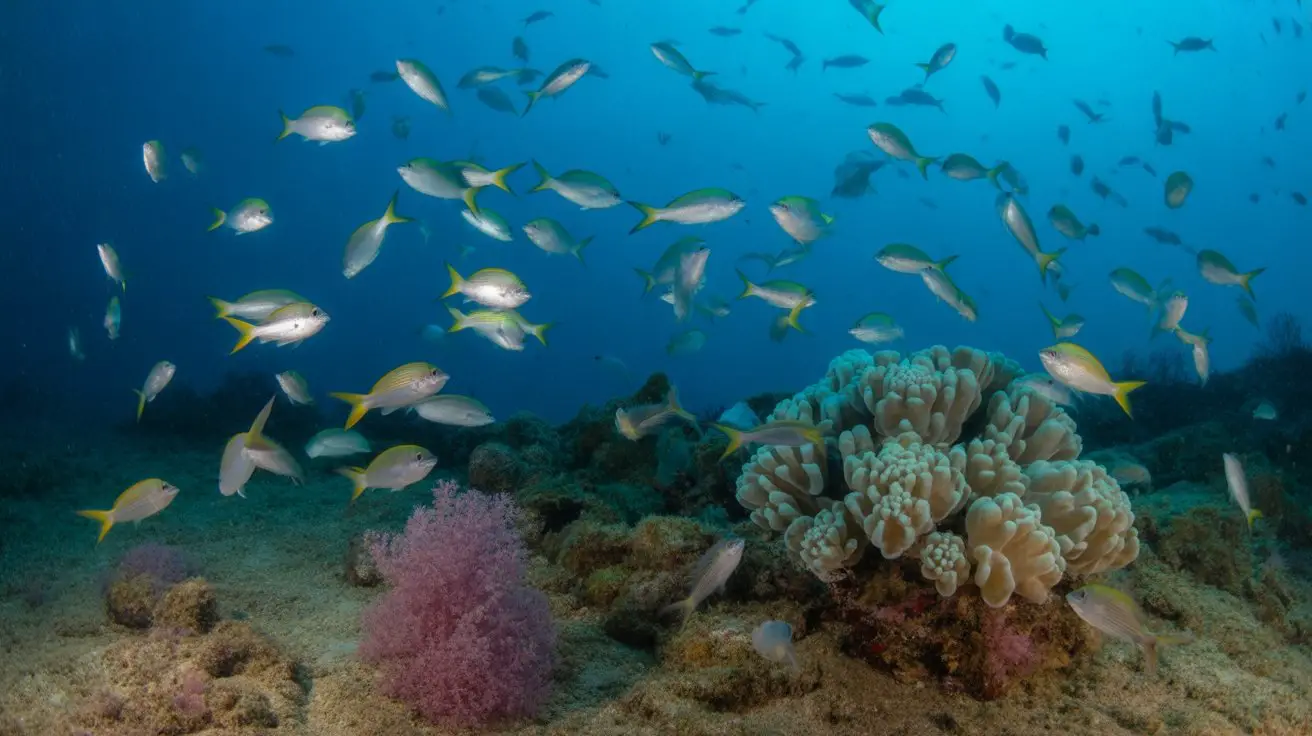
While marine environments impose osmotic stress through hypersalinity, freshwater habitats create opposing physiological demands that drive distinct evolutionary trajectories in fish coloration.
You’ll observe that saltwater species develop energy-intensive pigmentation systems because they’re metabolically equipped to handle ionic regulation costs. Marine fish allocate resources to chromatophore development for predator avoidance and sexual selection in three-dimensional coral reef ecosystems.
Freshwater environments present different constraints:
- Metabolic efficiency pressures favor cryptic coloration over energetically expensive display patterns.
- Limited spectral environments in turbid waters reduce selective pressure for complex chromatic adaptations.
- Territorial behaviors in confined spaces prioritize subtle signaling over conspicuous displays.
You’re seeing convergent evolution where similar ecological niches produce comparable color strategies, yet divergent pathways reflect fundamental osmoregulatory differences between these aquatic environments. Additionally, the impact of overfishing and pollution on marine ecosystems can further influence the evolutionary pressures faced by fish in saltwater habitats.
Species-Specific Examples of Colorful Marine Fish
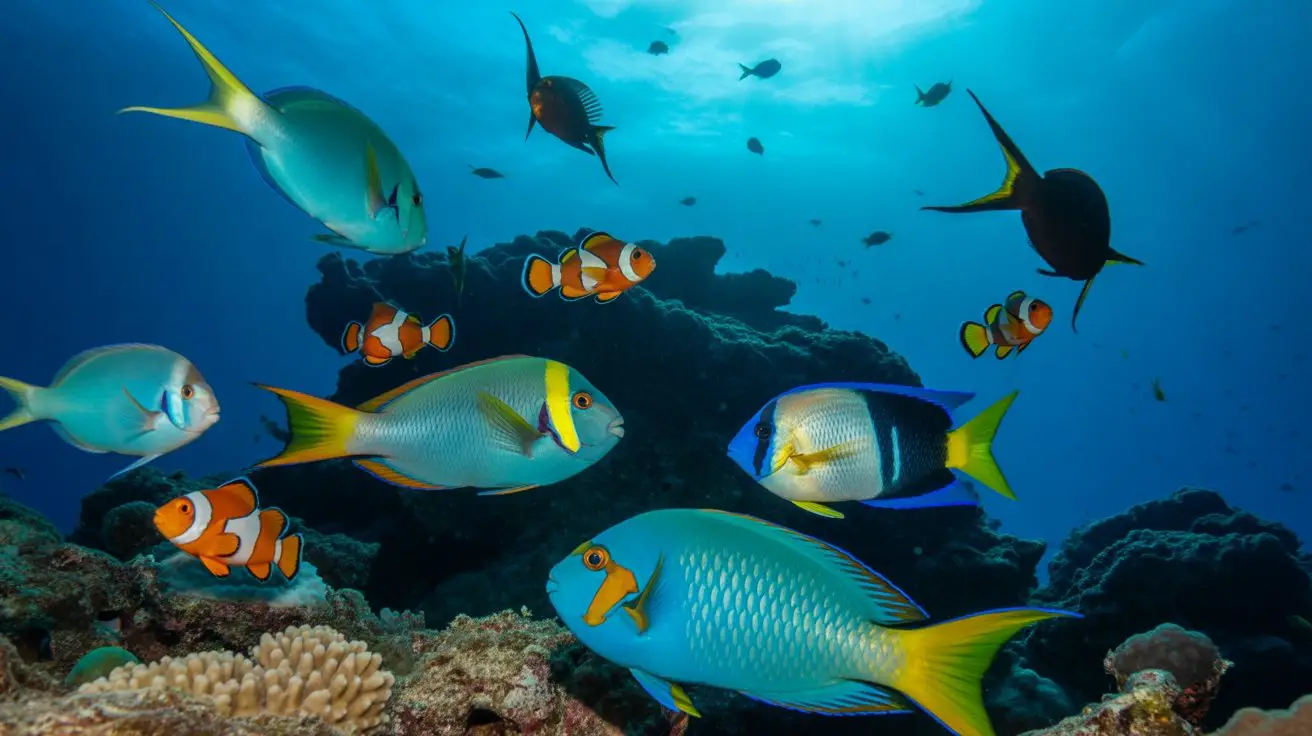
Where can you witness the most spectacular chromatic adaptations that exemplify marine evolutionary pressures?
You’ll find them in coral reef ecosystems where parrotfish (*Scaridae*) display vibrant blues and greens for species recognition and sexual selection.
Mandarin fish (*Synchiropus splendidus*) exhibit psychedelic patterns containing rare blue pigments called cyanophores.
Angelfish (*Pomacanthidae*) demonstrate ontogenetic color changes, shifting from cryptic juvenile patterns to bold adult coloration.
Clownfish (*Amphiprioninae*) utilize aposematic orange-white banding for predator deterrence and anemone recognition.
Surgeonfish (*Acanthuridae*) employ disruptive coloration patterns that fragment their body outline against coral backgrounds.
These species exemplify convergent evolution in marine chromatic strategies, utilizing specialized chromatophores, structural coloration, and biochemical pigments to optimize survival, reproduction, and ecological niche exploitation within competitive saltwater environments. Furthermore, their vibrant colors are often a direct result of their symbiotic relationships with coral ecosystems, which provide essential habitats and resources for their survival.
Conclusion
You’ve witnessed how ocean fish paint themselves with nature’s palette through sophisticated evolutionary mechanisms. Color adaptation functions as your underwater survival toolkit—whether you’re camouflaging against coral matrices, signaling reproductive fitness through chromatophore manipulation, or deploying aposematic warnings via specialized pigment cells. These chromatic strategies demonstrate how selective pressures sculpt phenotypic expression in marine environments. Your understanding reveals that coloration isn’t merely aesthetic; it’s biochemical communication encoded in survival-critical adaptations across diverse aquatic ecosystems.
